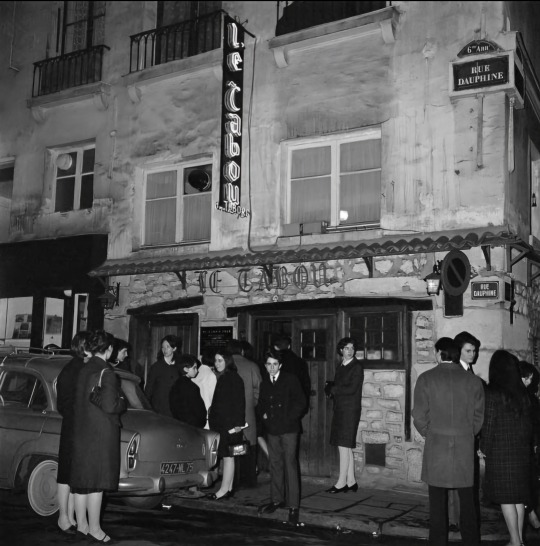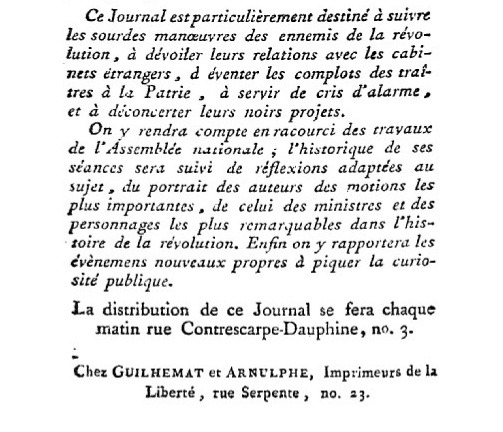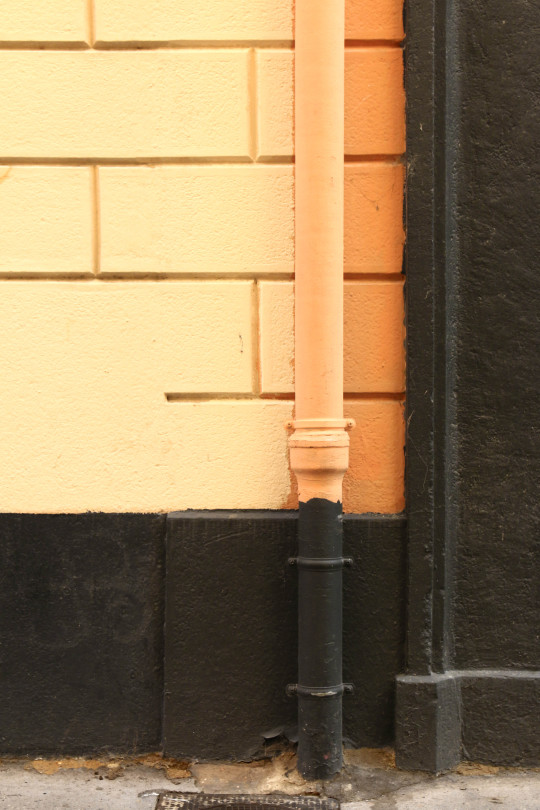#rue Dauphine
Explore tagged Tumblr posts
Text

Derniers sapins rue Dauphine…
#photography#original photography#original photography on tumblr#paris#hotel#sapin de noël#rue Dauphine
50 notes
·
View notes
Text

Bon jour ☕️ 🥐 🍎 bon Week-end à tous
Le Tabou, rue Dauphine🗼Paris
Photo de © Roger-Viollet 1963
#photooftheday#photography#black and white#vintage#roger viollet#paris#le tabou#rue dauphine#bonjour#bon week-end#fidjie fidjie
54 notes
·
View notes
Text

Décor urbain.
#photographie urbaine#urban photography#couleurs urbaines#urban colors#décor urbain#urban decor#reflet#reflection#rue françois dauphin#ainay#69002#lyon#rhône#auvergne rhône alpes#france#photographers on tumblr#poltredlyon#monlyon#onlylyon#igerslyon#lyonurb#brumpicts#frédéric brumby
145 notes
·
View notes
Text

Phantom of the Rue Morgue (1954)
#phantom of the rue morgue#karl malden#claude dauphin#patricia medina#1950s movies#roy del ruth#edgar allan poe#horror movie poster
48 notes
·
View notes
Text

La Mode, 25 décembre 1845, Paris. Coiffures de Mariton. Fleurs de Cartier. Bijoux de Gillion, 9 Boulevart des Italiens. Etoffes de robes de la Gagelin. Dentelles de Violard. Gants de Mayer. Rubans de la Glaneuse, 28 rue de la Chaussee d'Antin. Chaussures d'Hoffman, 9 rue du Dauphin. Envois divers de la Maison de Commission Lassalle & Cie., 35 rue Louis le Grand. Digital Collections of the Los Angeles Public Library
#La Mode#19th century#1840s#1845#on this day#December 25#periodical#fashion#fashion plate#color#lapl#dress#gown#evening#hair#devant et dos
62 notes
·
View notes
Text
Johnny Mnemonic, 1995


En 2021, la société est marquée par un Internet virtuel, qui a engendré un effet dégénératif appelé « syndrome d'atténuation nerveuse » ou NAS. Les mégacorporations contrôlent une grande partie du monde, intensifiant l'hostilité de classe déjà suscitée par le NAS.
Johnny est un « coursier mnémotechnique » qui transporte discrètement des données sensibles pour des entreprises dans un dispositif de stockage implanté dans son cerveau, au prix de ses souvenirs d'enfance. Son travail actuel est pour un groupe de scientifiques à Pékin. Johnny rechigne d'abord en apprenant que les données dépassent sa capacité de mémoire, même avec compression, mais il accepte, étant donné que les frais élevés couvriront le coût de l'opération pour retirer le dispositif. Johnny garde secret le fait qu'il est surchargé ; il doit extraire les données dans les prochains jours, sous peine de subir des lésions cérébrales mortelles et de corrompre les données. Les scientifiques cryptent les données avec trois images aléatoires provenant d'un flux télévisé. Alors qu'ils transmettent ces images au récepteur à Newark, dans le New Jersey, ils sont attaqués et tués par des yakuzas dirigés par Shinji, qui manie un fouet laser. Johnny combat les yakuzas, s'empare d'un fragment des images de la clé de cryptage et s'échappe. Shinji rapporte son échec à son supérieur, Takahashi. Leur conversation révèle que les yakuzas travaillent pour le compte de Pharmakom, une mégacorporation. Johnny est témoin de brèves projections d'une intelligence artificielle féminine qui tente de l'aider, mais il la repousse.
À Newark, Johnny rencontre son agent Ralfi, qui le trahit. Johnny est sauvé des yakuzas par Jane, une garde du corps cybernétiquement améliorée, ainsi que par des membres des Lo-Teks, un groupe anti-establishment, et le chef des Lo-Teks, J-Bone. Ralfi est découpé en morceaux lorsqu'il se met en travers du chemin de Shinji. Jane emmène Johnny chez Spider, le médecin qui a installé les implants de Jane. Dans une clinique, Spider révèle que son association caritative médicale était destinée à recevoir les données des scientifiques de Pékin, qui ont mis au point un remède volé contre le NAS. Spider affirme que Pharmakom refuse de divulguer le remède parce qu'elle profite des traitements d'atténuation. La partie des images cryptées que Johnny a prises, ainsi que le morceau que Spider a reçu, ne sont pas suffisantes pour décrypter l'esprit de Johnny. Ainsi, Spider suggère qu'ils aillent voir Jones à la base des Lo-Teks. Soudain, un assassin engagé par Takahashi, connu sous le nom de 'The Street Preacher', les attaque, tuant Spider alors que Johnny et Jane parviennent à s'échapper.
Les deux hommes atteignent la base Lo-Tek et apprennent de J-Bone que Jones est un dauphin autrefois utilisé par la Marine, qui peut les aider à décrypter la charge utile de Johnny. Alors qu'ils commencent la procédure, Shinji et les yakuza attaquent la base. Takahashi apparaît et affronte Johnny, le tenant sous la menace d'une arme, avant que Shinji, dans un retournement de situation inattendu, ne tire sur Takahashi. Johnny et Shinji se battent, culminant avec Johnny tuant Shinji. Avant de mourir, Takahashi change d'avis et remet une partie de la clé de cryptage à Johnny. Cela ne suffit cependant pas à décrypter complètement les données. J-Bone dit à Johnny qu'il devra pirater son propre esprit avec l'aide de Jones. Johnny, Jane, J-Bone et les Lo-Teks vainquent les forces restantes envoyées à leur poursuite. Le prédicateur de rue arrive et, après un combat, est électrocuté à mort par Johnny et Jane.
La deuxième tentative commence et, aidé par l'IA féminine, Johnny décrypte les données tout en récupérant simultanément ses souvenirs d'enfance. L'IA se révèle être une version virtuelle de la mère de Johnny, qui a fondé Pharmakom et a été irritée par les actions de l'entreprise. Alors que J-Bone transmet les informations sur le traitement NAS sur Internet via des diffusions pirates, Johnny et Jane regardent de loin le siège de Pharmakom partir en flammes sous le tollé général. Pour célébrer l'événement, J-Bone se débarrasse du cadavre carbonisé du prédicateur de rue en le jetant dans les eaux de Newark.
#johnny mnemonic#film#movie#movies#90s movies#1995#90s#cinephile#physical media#vhs#video tapes#collection vhs#vhs collection#keanu reeves#Robert Longo#Dolph Lundgren#Takeshi Kitano#Ice-T#Dina Meyer#cyberpunk#action#thriller#science fiction#vhs tapes
10 notes
·
View notes
Text
Since I used to hyperfixate on the french musical "1789 les amants de la bastille" and now am hyperfixating on Les Misérable and they have similar themes i thought i could assign a Les mis song to each Les amants de la Bastille song (expect for "sur ma peau" and "je veux le monde" nothing got the vibe or them for them) based on similar vibes and/or themes
Le cri de ma naissance - Drink with me
Je mise tous - Beggars at the feast
Au Palais Royal/Les protituées - Lovely ladies AND Paris/Look down
La nuit m'appelle - i dreamed a dream
Tomber dans ses yeux - In my life
Maniaque - Stars
La sentence - on my own
Hey ha - ABC café/red and black
La guerre pour se plaire/Le dauphin - A heart full of love
La rue nous appartient - The barriquade
A quoi tu danse ? - ABC Café/red and black (again)
Je suis un dieu/Le cauchemar - maitre thenardier
Ca ira mon amour - Do you hear the people sing
Nous ne somme - The final battle
Je vous rend mon âme - a little bit of rain
La prise de la bastille - The second attack
Fix/ les droits de l'homme - Turning
Pour la peine - Empty chairs at empty tables
Pour un nouveau monde - Little people
Fille et femmes à la fois - At the end of the day
Allez viens (c'est bientôt la fin) - epilogue
37 notes
·
View notes
Text
Marat et Le Junius Français
I know it's been a while since I've done a post like this one, but that doesn't mean I've lost interest in writing about little-known anecdotes and adventures of Marat! One of them is the brief and chaotic existence of Le Junius Français, one of Marat's lesser-known newspapers, which he created and published during the month of June 1790.
The probable reason why hardly anyone knows that Junius Français existed (the only Marat historian I've ever seen mention it was Olivier Coquard in his Jean-Paul Marat, une lumière en Révolution : biographie d'un homme des Lumières devenu l'Ami du peuple) is that it only had 13 issues in total. Its publication was somewhat turbulent, lasting only three weeks, for obvious reasons. But it is still, in all its context, a very interesting and surprising periodical.
The creation of the short-lived newspaper comes at a complicated and somewhat hectic time for Marat, who had just returned from London in May and was keen to resume publication of L'Ami du Peuple and join the patriotic press. As usual, Marat had to remain underground, as he continued to be the target of legal proceedings and arrest warrants and the publication of L'Ami du Peuple was, unsurprisingly, banned by the authorities. In addition, there was also a constant fight against forgers - the fake Marat, plagiarists who published newspapers and pamphlets under his name, which may also confirm the influence and popularity he had gained at the time. These forgeries of L'Ami du Peuple began to appear in large numbers from 1790 onwards, and Marat made an effort to defend himself against them as soon as he returned to Paris. Not only him, but the Revolution in general was going through a turbulent situation. There had been conflicts involving bakers and grain, the question of war and federations, as well as other external crises that concerned France.
It was against this backdrop of accusations against conspirators, clandestinity and arrest warrants that Marat created Le Junius Français, a second newspaper, which was published for the first time on June 2, 1790. During its publication, Le Junius Français coexisted with L'Ami du Peuple, and both periodicals were published (almost) every day until the end of the first, in its 13th issue, on June 24.
On the structural aspects of the newspaper, Professor Coquard, already cited above as the main basis of this post, comments in Marat, L'Ami du Peuple [p.243]:
This second newspaper presents itself exactly like L'Ami du Peuple: an eight-page in-oitavo printed on poor quality paper that comes out of the workshops of "Guilhemat et Arnulphe, printers of Liberty, at 23 rue Serpent" and is distributed - door to door only - "every morning at number three rue Contrescarpe-Dauphine". Junius seems to focus more specifically on articles of denunciation, while L'Ami du Peuple is probably looking for more general political analysis. However, the two sheets are quite similar.
The name chosen by Marat for the newspaper, "Le Junius Français", also intrigued me. I found in this note apparently (?) written by G. Eljorf through Le gazetier révolutionnaire, a catalog of periodicals of the time, an explanation that seemed to me quite plausible and accurate about the title:
Lucius Junius Brutus and Marcus Junius Brutus are two figures from Roman history engaged in the struggle against tyranny, that of Tarquin and that of Caesar respectively. The pseudonym Junius had been used by an anonymous English pamphleteer around 1770 in a series of letters critical of the government of George III (Junius Letters).
We can speculate on various reasons why Marat might have created the newspaper in such a complex period. Perhaps it was one of his skillful political strategies to amplify his attacks on his enemies at a time of difficulty, but it could also have been the start of a newspaper that Marat actually planned to maintain, so that he could give L'Ami du Peuple another direction. The intentions and objectives of Junius Français, at least, are clearly explained on page 8 of the first issue:

This journal is particularly intended to follow the deaf maneuvers of the revolution's enemies, to reveal their relations with foreign cabinets, to vent the plots of traitors to the Fatherland, to serve as a cry of alarm, to disconcert their dark schemes.
The history of its sessions will be followed by reflections adapted to the subject, portraits of the authors of the most important motions, of the ministers and of the most remarkable figures in the history of the revolution. Finally, it will report on new events likely to pique public curiosity.
In fact, at least in the first issue - which I analyzed more meticulously than the others - he does what he says. He first scolds the Parisians, in the same fraternal and unmistakable style as L'Ami du Peuple, and then recounts the May 31 session of the National Assembly, where a case of conflict between the grenadiers of the Royal Navy regiment was discussed in which a group of patriots had been brutally mistreated. He speaks briefly about the decisions concerning the civil organization of the clergy and denounces the Dutch. He constantly maintains the spirit of denunciation, calling on the people to take revenge. Although his name only appears in 4th issue, it's not hard to spot Marat's pen in every word.
Marat unfortunately didn't manage to keep publishing Junius Français for long. Certainly, the newspaper ceased publication at the end of June for a number of reasons, and among them there is no doubt that Marat must have been overwhelmed with writing and managing the printing and correspondence for two revolutionary periodicals at once. Expenses, lack of time and problems involving the printers of both Junius and L'Ami du Peuple must have contributed to the sudden demise of this newspaper.
I found it interesting to bring up Junius Français because, as well as being one of Marat's most unknown and neglected works, it is also one of his writings that impresses me the most, since he managed to keep both newspapers going at the same time in a chaotic context in which he had to hide from the police, manage the publication of other of his works, solve plagiarism problems and at the same time pay attention to the political situation in France, which was becoming increasingly tense. His commitment, his incessant dedication to producing even in the most difficult and theoretically impossible times is always fascinating, to say the least, and Junius Français is an example of how Marat's revolutionary activity was frenetic and tireless even underground and under threat from the government. His attempt to maintain the two newspapers, despite failing, went beyond Marat's own limits and was, in a way, a good propaganda tool against his political enemies.
#marat#le junius français#marat anedoctes#jean paul marat#frev#french revolution#my posts#btw i swear i'm working on the next le docteur marat post!#i'm moving at the moment and i'm not as persevering as marat so it's been a bit difficult to write 😆#i'm also preparing a list of the addresses where he took refuge in his escapes from the police during the revolution!
34 notes
·
View notes
Text

Devant le Tabou, rue Dauphine à Saint-Germain-des-Prés
1947. Paris Lustucru.
17 notes
·
View notes
Text
À seize ans, j’empruntais chaque samedi le RER E jusqu’à Magenta, puis la ligne 5 jusqu’à Breguet-Sabin, où je tentais en skateboard de sauter par dessus quelques volées de marches, ce que nous évitions de faire dans notre banlieue pavillonnaire, à cause du bruit des roues sur le bitume qui gênait les voisins. Plus jeune, vers mes dix ans, ma mère m’apprit à déchiffrer la signalétique du métro parisien pour que, plus âgé, je puisse m’y guider seul. J’ai embrassé une fille sur un quai aux abords de Notre-Dame, puis une autre sur le quai d’en face, bien des années plus tard ; des deux se dégageait la même odeur corporelle légèrement âcre et traînante que je gardai ensuite dans le nez plusieurs heures. Paris ne me manque pas lorsque j’en suis loin, mais je n’ai jamais envie d’en partir. Le matin, dans la ligne 2 en direction de Porte-Dauphine, s’il y a de la place, on peut s’asseoir dans le sens de la marche pour ne pas se sentir nauséeux, ou dans le sens inverse pour admirer le soleil se lever entre Jaurès et Barbès-Rochechouart. Quand j’étais en colonie de vacances, je disais aux autres enfants : Je viens du quatre-vingt-treize, du neuf-trois, pour les effrayer, ce qui généralement n’avait aucun effet sur eux. Plus tard, pour séduire une fille, j’avais simplement dit : de Paris, sans résultat, avant d’apprendre qu’elle venait de Marseille. La nuit, fenêtre ouverte, j’entends des coups de feu qui ne sont que des pétards qui explosent ou des objets qui tombent. Le 13 novembre 2015, je sortai du restaurant cinq minutes avant l’attaque, non loin, puis j’ai regardé à l’abri le nombre des victimes augmenter sur un écran d’ordinateur ; je suis ressorti vers cinq heures du matin dans une ville morte ; le 15 novembre, j’ai reçu un SMS qui disait : Le père de B. est mort au Bataclan ; le lundi 16 novembre, dans le métro, une fille pleurait à chaudes larmes, sans discontinuer, je me souviens avoir pensé, sans trop y croire, mais pour me rassurer, qu’elle avait peut-être été licenciée, ou trompée ; je me souviens aussi d’une femme qui lisait, l’air de rien, ou se forçait à lire. Je n’ai pas pu lire dans les transports pendant environ un mois. Je suis habitué à trois librairies, dans mon arrondissement ; par loyauté, quand je me rends dans l’une, j’entre aussi dans les deux autres, si bien que mon budget librairie est bien trop important ; l’intérieur de mon appartement est saturé de livres. J’ai passé une dizaine de nuits dans différents hôtels avec une fille que je n’aimais pas et qui m’a demandé en fiançailles. Quand je regarde les traces de calcaire déposées sur les verres nettoyés à l’eau courante, je pense que ces mêmes traces doivent être présentes à l’intérieur de mon corps, sur mes organes, aussi je décide d’acheter des packs d’Evian, puis me ravise en repensant aux cinq étages de mon immeuble et à l’écologie. Dans la rue, je songe parfois au milieu de la foule que la vie de chaque passant est contenue dans leurs têtes, qu’ils avancent en superposant les images de la ville à celles de leurs existences, de leurs histoires, que Paris les contient toutes et que je n’en suis qu’un fragment.
16 notes
·
View notes
Text

Congestion in Paris, Pont Neuf from the Rue Dauphine (1700) by Nicolas Guérard
#old art#stencilites#stencil#parasian artist#french art#vintage art#clipart#crowd#old france#18th century#historical life#old style#location scouting#french artists
2 notes
·
View notes
Text

Les couleurs de la ville.
Mur, gouttière
#photographie urbaine#urban photography#couleurs urbaines#urban colors#décor urbain#urban decor#abstraction#figuration#mur#wall#minimalisme#minimalism#rue françois dauphin#ainay#69002#lyon#rhône#auvergne rhône alpes#france#photographers on tumblr#poltredlyon#osezlesgaleries#monlyon#onlylyon#igerslyon#lyonurb#brumpicts#frédéric brumby
47 notes
·
View notes
Text
The Year 1817
Volume 1: Fantine; Book 3: In The Year 1817; Chapter 1: The Year 1817
1817 is the year which Louis XVIII., with a certain royal assurance which was not wanting in pride, entitled the twenty-second of his reign. It is the year in which M. Bruguière de Sorsum was celebrated. All the hairdressers’ shops, hoping for powder and the return of the royal bird, were besmeared with azure and decked with fleurs-de-lys. It was the candid time at which Count Lynch sat every Sunday as church-warden in the church-warden’s pew of Saint-Germain-des-Prés, in his costume of a peer of France, with his red ribbon and his long nose and the majesty of profile peculiar to a man who has performed a brilliant action. The brilliant action performed by M. Lynch was this: being mayor of Bordeaux, on the 12th of March, 1814, he had surrendered the city a little too promptly to M. the Duke d’Angoulême. Hence his peerage. In 1817 fashion swallowed up little boys of from four to six years of age in vast caps of morocco leather with ear-tabs resembling Esquimaux mitres. The French army was dressed in white, after the mode of the Austrian; the regiments were called legions; instead of numbers they bore the names of departments; Napoleon was at St. Helena; and since England refused him green cloth, he was having his old coats turned. In 1817 Pelligrini sang; Mademoiselle Bigottini danced; Potier reigned; Odry did not yet exist. Madame Saqui had succeeded to Forioso. There were still Prussians in France. M. Delalot was a personage. Legitimacy had just asserted itself by cutting off the hand, then the head, of Pleignier, of Carbonneau, and of Tolleron. The Prince de Talleyrand, grand chamberlain, and the Abbé Louis, appointed minister of finance, laughed as they looked at each other, with the laugh of the two augurs; both of them had celebrated, on the 14th of July, 1790, the mass of federation in the Champ de Mars; Talleyrand had said it as bishop, Louis had served it in the capacity of deacon. In 1817, in the side-alleys of this same Champ de Mars, two great cylinders of wood might have been seen lying in the rain, rotting amid the grass, painted blue, with traces of eagles and bees, from which the gilding was falling. These were the columns which two years before had upheld the Emperor’s platform in the Champ de Mai. They were blackened here and there with the scorches of the bivouac of Austrians encamped near Gros-Caillou. Two or three of these columns had disappeared in these bivouac fires, and had warmed the large hands of the Imperial troops. The Field of May had this remarkable point: that it had been held in the month of June and in the Field of March (Mars). In this year, 1817, two things were popular: the Voltaire-Touquet and the snuff-box à la Charter. The most recent Parisian sensation was the crime of Dautun, who had thrown his brother’s head into the fountain of the Flower-Market.
They had begun to feel anxious at the Naval Department, on account of the lack of news from that fatal frigate, The Medusa, which was destined to cover Chaumareix with infamy and Géricault with glory. Colonel Selves was going to Egypt to become Soliman-Pasha. The palace of Thermes, in the Rue de La Harpe, served as a shop for a cooper. On the platform of the octagonal tower of the Hotel de Cluny, the little shed of boards, which had served as an observatory to Messier, the naval astronomer under Louis XVI., was still to be seen. The Duchesse de Duras read to three or four friends her unpublished Ourika, in her boudoir furnished by X. in sky-blue satin. The N’s were scratched off the Louvre. The bridge of Austerlitz had abdicated, and was entitled the bridge of the King’s Garden [du Jardin du Roi], a double enigma, which disguised the bridge of Austerlitz and the Jardin des Plantes at one stroke. Louis XVIII., much preoccupied while annotating Horace with the corner of his finger-nail, heroes who have become emperors, and makers of wooden shoes who have become dauphins, had two anxieties,—Napoleon and Mathurin Bruneau. The French Academy had given for its prize subject, The Happiness procured through Study. M. Bellart was officially eloquent. In his shadow could be seen germinating that future advocate-general of Broë, dedicated to the sarcasms of Paul-Louis Courier. There was a false Chateaubriand, named Marchangy, in the interim, until there should be a false Marchangy, named d’Arlincourt. Claire d’Albe and Malek-Adel were masterpieces; Madame Cottin was proclaimed the chief writer of the epoch. The Institute had the academician, Napoleon Bonaparte, stricken from its list of members. A royal ordinance erected Angoulême into a naval school; for the Duc d’Angoulême, being lord high admiral, it was evident that the city of Angoulême had all the qualities of a seaport; otherwise the monarchical principle would have received a wound. In the Council of Ministers the question was agitated whether vignettes representing slack-rope performances, which adorned Franconi’s advertising posters, and which attracted throngs of street urchins, should be tolerated. M. Paër, the author of Agnese, a good sort of fellow, with a square face and a wart on his cheek, directed the little private concerts of the Marquise de Sasenaye in the Rue Ville l’Évêque. All the young girls were singing the Hermit of Saint-Avelle, with words by Edmond Géraud. The Yellow Dwarf was transferred into Mirror. The Café Lemblin stood up for the Emperor, against the Café Valois, which upheld the Bourbons. The Duc de Berri, already surveyed from the shadow by Louvel, had just been married to a princess of Sicily. Madame de Staël had died a year previously. The body-guard hissed Mademoiselle Mars. The grand newspapers were all very small. Their form was restricted, but their liberty was great. The Constitutionnel was constitutional. La Minerve called Chateaubriand Chateaubriant. That t made the good middle-class people laugh heartily at the expense of the great writer. In journals which sold themselves, prostituted journalists, insulted the exiles of 1815.
David had no longer any talent, Arnault had no longer any wit, Carnot was no longer honest, Soult had won no battles; it is true that Napoleon had no longer any genius. No one is ignorant of the fact that letters sent to an exile by post very rarely reached him, as the police made it their religious duty to intercept them. This is no new fact; Descartes complained of it in his exile. Now David, having, in a Belgian publication, shown some displeasure at not receiving letters which had been written to him, it struck the royalist journals as amusing; and they derided the prescribed man well on this occasion. What separated two men more than an abyss was to say, the regicides, or to say the voters; to say the enemies, or to say the allies; to say Napoleon, or to say Buonaparte. All sensible people were agreed that the era of revolution had been closed forever by King Louis XVIII., surnamed “The Immortal Author of the Charter.” On the platform of the Pont-Neuf, the word Redivivus was carved on the pedestal that awaited the statue of Henry IV. M. Piet, in the Rue Thérèse, No. 4, was making the rough draft of his privy assembly to consolidate the monarchy. The leaders of the Right said at grave conjunctures, “We must write to Bacot.” MM. Canuel, O’Mahoney, and De Chappedelaine were preparing the sketch, to some extent with Monsieur’s approval, of what was to become later on “The Conspiracy of the Bord de l’Eau”—of the waterside. L’Épingle Noire was already plotting in his own quarter. Delaverderie was conferring with Trogoff. M. Decazes, who was liberal to a degree, reigned. Chateaubriand stood every morning at his window at No. 27 Rue Saint-Dominique, clad in footed trousers, and slippers, with a madras kerchief knotted over his gray hair, with his eyes fixed on a mirror, a complete set of dentist’s instruments spread out before him, cleaning his teeth, which were charming, while he dictated The Monarchy according to the Charter to M. Pilorge, his secretary. Criticism, assuming an authoritative tone, preferred Lafon to Talma. M. de Féletez signed himself A.; M. Hoffmann signed himself Z. Charles Nodier wrote Thérèse Aubert. Divorce was abolished. Lyceums called themselves colleges. The collegians, decorated on the collar with a golden fleur-de-lys, fought each other apropos of the King of Rome. The counter-police of the château had denounced to her Royal Highness Madame, the portrait, everywhere exhibited, of M. the Duc d’Orléans, who made a better appearance in his uniform of a colonel-general of hussars than M. the Duc de Berri, in his uniform of colonel-general of dragoons—a serious inconvenience. The city of Paris was having the dome of the Invalides regilded at its own expense. Serious men asked themselves what M. de Trinquelague would do on such or such an occasion; M. Clausel de Montals differed on divers points from M. Clausel de Coussergues; M. de Salaberry was not satisfied. The comedian Picard, who belonged to the Academy, which the comedian Molière had not been able to do, had The Two Philiberts played at the Odéon, upon whose pediment the removal of the letters still allowed THEATRE OF THE EMPRESS to be plainly read. People took part for or against Cugnet de Montarlot. Fabvier was factious; Bavoux was revolutionary. The Liberal, Pélicier, published an edition of Voltaire, with the following title: Works of Voltaire, of the French Academy. “That will attract purchasers,” said the ingenious editor. The general opinion was that M. Charles Loyson would be the genius of the century; envy was beginning to gnaw at him—a sign of glory; and this verse was composed on him:—
“Even when Loyson steals, one feels that he has paws.”
As Cardinal Fesch refused to resign, M. de Pins, Archbishop of Amasie, administered the diocese of Lyons. The quarrel over the valley of Dappes was begun between Switzerland and France by a memoir from Captain, afterwards General Dufour. Saint-Simon, ignored, was erecting his sublime dream. There was a celebrated Fourier at the Academy of Science, whom posterity has forgotten; and in some garret an obscure Fourier, whom the future will recall. Lord Byron was beginning to make his mark; a note to a poem by Millevoye introduced him to France in these terms: a certain Lord Baron. David d’Angers was trying to work in marble. The Abbé Caron was speaking, in terms of praise, to a private gathering of seminarists in the blind alley of Feuillantines, of an unknown priest, named Félicité-Robert, who, at a latter date, became Lamennais. A thing which smoked and clattered on the Seine with the noise of a swimming dog went and came beneath the windows of the Tuileries, from the Pont Royal to the Pont Louis XV.; it was a piece of mechanism which was not good for much; a sort of plaything, the idle dream of a dream-ridden inventor; an utopia—a steamboat. The Parisians stared indifferently at this useless thing. M. de Vaublanc, the reformer of the Institute by a coup d’état, the distinguished author of numerous academicians, ordinances, and batches of members, after having created them, could not succeed in becoming one himself. The Faubourg Saint-Germain and the pavilion de Marsan wished to have M. Delaveau for prefect of police, on account of his piety. Dupuytren and Récamier entered into a quarrel in the amphitheatre of the School of Medicine, and threatened each other with their fists on the subject of the divinity of Jesus Christ. Cuvier, with one eye on Genesis and the other on nature, tried to please bigoted reaction by reconciling fossils with texts and by making mastodons flatter Moses.
M. François de Neufchâteau, the praiseworthy cultivator of the memory of Parmentier, made a thousand efforts to have pomme de terre [potato] pronounced parmentière, and succeeded therein not at all. The Abbé Grégoire, ex-bishop, ex-conventionary, ex-senator, had passed, in the royalist polemics, to the state of “Infamous Grégoire.” The locution of which we have made use—passed to the state of—has been condemned as a neologism by M. Royer Collard. Under the third arch of the Pont de Jéna, the new stone with which, the two years previously, the mining aperture made by Blücher to blow up the bridge had been stopped up, was still recognizable on account of its whiteness. Justice summoned to its bar a man who, on seeing the Comte d’Artois enter Notre Dame, had said aloud: “Sapristi! I regret the time when I saw Bonaparte and Talma enter the Bel Sauvage, arm in arm.” A seditious utterance. Six months in prison. Traitors showed themselves unbuttoned; men who had gone over to the enemy on the eve of battle made no secret of their recompense, and strutted immodestly in the light of day, in the cynicism of riches and dignities; deserters from Ligny and Quatre-Bras, in the brazenness of their well-paid turpitude, exhibited their devotion to the monarchy in the most barefaced manner.
This is what floats up confusedly, pell-mell, for the year 1817, and is now forgotten. History neglects nearly all these particulars, and cannot do otherwise; the infinity would overwhelm it. Nevertheless, these details, which are wrongly called trivial,—there are no trivial facts in humanity, nor little leaves in vegetation,—are useful. It is of the physiognomy of the years that the physiognomy of the centuries is composed. In this year of 1817 four young Parisians arranged “a fine farce.”
13 notes
·
View notes
Text

La Mode, 5 septembre 1845, Paris. v. 30, plate 25. Digital Collections of the Los Angeles Public Library
Chapeau et capote de Mariton. Fleurs de Cartier. Etoffes de robes & cachemire de la Maison Gagelin. Lingerie de Daniel Deray. Rubans de la Galerie de la Glaneuse, 28 rue de la Chaussee d'Antin. Corsets sans goussets de Mme. Dumoulin. Gants de Mayer. Chaussures d'Hoffman, 9 rue du Dauphin. Envois divers de la Maison de Commission Lassalle et Cie., 35 rue Louis le Grand.
#La Mode#19th century#1840s#1845#on this day#September 5#periodical#fashion#fashion plate#color#lapl#dress#bonnet#shawl
40 notes
·
View notes
Text
[...]
Vení, quedate.
tomá este trago, llueve,
te mojarás en la rue Dauphine,
no hay nadie en los cafés repletos,
no te miento, no hay nadie.
Ya sé, es difícil,
es tan difícil encontrarse
[...]
Julio Cortázar, Aquí Alejandra
2 notes
·
View notes
Text
2023年08月26日 Un Monopoly pour les enfants
Hier soir, nous avons joué en famille au Monopoly. Cela parait anodin, mais je pense que c'est la première fois que j'ai joué au véritable Monopoly...
En effet, quand j'étais petit je jouais chez mes grand-parents à une version simplifiée du jeu qui s'appelait le Monopoly Junior. Des années après avoir joué à celui-ci, je vous propose d'observer les différences entre les deux ! Il semble il y avoir plusieurs versions du Monopoly Junior, celle sur laquelle je jouais se passait dans une fête foraine.

Avant de commencer, voyons voir si vous avez lu les posts précédents !
Le sondage reste ouvert pendant une semaine, on verra ce qui se passe quand il sera fini !
La première chose que l'on remarque, c'est le changement d'esthétique. Les pions ne sont plus des objets en miniature, mais des voitures en plastique chacune d'une couleur différente, ce qui est plus facile à identifier (même si on pourrait confondre la couleur des pions avec la couleur des cases). Les billets sont aussi plus colorés, tandis que le plateau possède beaucoup plus d'illustrations, notamment en utilisant la mascotte du jeu. Il est assez rectangulaire comparé à la plupart des Monopoly et se plie en deux. Enfin, comme le jeu se déroule dans une fête foraine, les rues sont devenues des attractions ! La case garage est devenue une case café et la prison a bien évidemment disparu pour laisser place à une case fortune qui permet de ramasser les billets placés sur celle-ci par les joueurs ayant payés pour voir un feu d'artifice ou un ballet de dauphins.

L'objectif du jeu est toujours le même (le capitalisme s'apprend aussi aux enfants...) cependant la valeur des billets a été revue à la baisse afin que les enfants fassent des additions plus simples: au lieu des billets de 1, 5, 10, 20, 50, 100 et 500 Mono, ici les billets vont de 1 à 5 et sont en euros afin de faire le lien avec l'argent dans la vraie vie pour la partie apprentissage (et puis ça fait argent de poche). Après tout, le Monopoly a été créé à l'origine par Elizabeth Magie pour représenter la nature antisociale du monopole sur le sol, il y a donc toujours quelque chose à apprendre...
De nombreux ajustements sont faits pour raccourcir les parties: on note désormais que toutes les couleurs ne possèdent que deux terrains contrairement aux trois terrains (sauf pour les cases bleues foncées et violettes) du jeu original. Cependant, il est impossible de faire payer plus cher en mettant plusieurs stands sur une même attraction ! Ainsi, le seul avantage à avoir deux attractions de la même couleur est de faire payer le double si un joueur passe sur une des deux cases. Il y a bien évidemment moins de cases que sur le plateau original, cependant le jeu n'utilise qu'un seul dé au lieu de deux. Le plateau prendrait donc plus de temps à parcourir que l'original, sauf si nous prenons en compte le changement fait aux gares !

En effet, celles-ci agissent normalement comme les terrains de couleur à la différence que les cases sont éparpillées aux quatre coins du plateau et que leur somme pour plusieurs gares cumulées n'est pas énorme. Mais dans ce Monopoly Junior, on n'achète pas la gare, on prend le train ! Ce qui signifie qu'on ne fait que relancer le dé.
Les cartes chances sont toujours de la partie, et certaines permettent carrément d'obtenir des stands gratuitement. Pour finir, il ne faut pas attendre qu'il n'y ait qu'un seul joueur avec de l'argent mais plutôt qu'un des joueurs n'ait plus d'argent pour terminer la partie. Les mécaniques d'enchères et d'échange à l'origine de stratégie et de parties de durée infinie ont tout simplement été supprimées, créant un jeu plus rapide mais également davantage soumis à l'aléatoire.
Après avoir joué (et gagné) hier soir au Monopoly, la simplification du jeu sur cette version junior devient plus qu'apparente !
3 notes
·
View notes